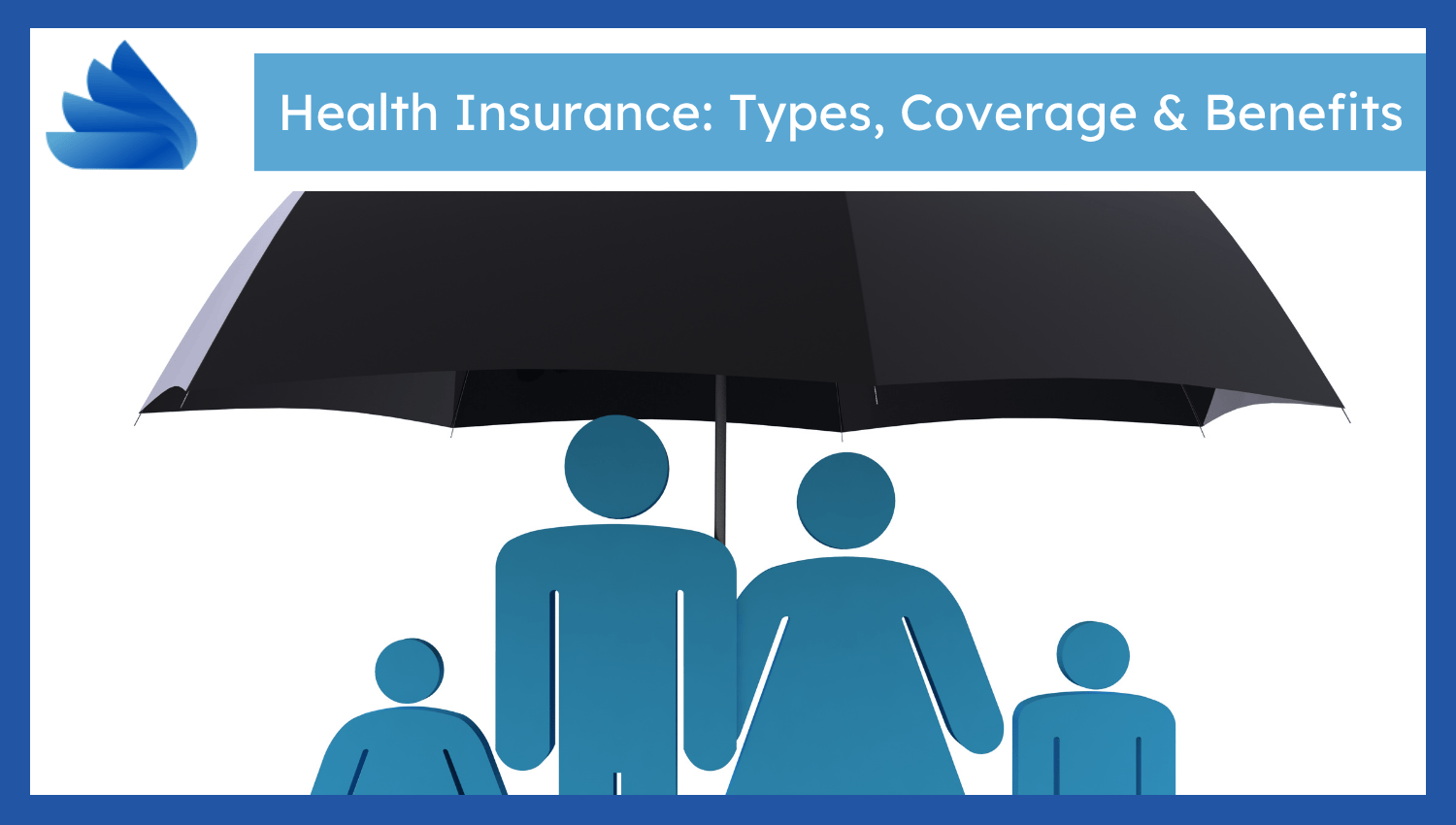
Health Insurance: Types, Coverage & Benefits
Health insurance is a contract between a person and an insurance company to pay for medical costs. It helps people by reducing the financial stress of healthcare by sharing the bill with the insurance company. It allows individuals to receive effective and timely health care. A health insurance plan charges you regular payments called premiums. The insured person has to cover the deductible, which is a set fixed amount, before the insurance steps in to help. Even after the deductible is met, healthcare visits or medicine purchases require the person to pay what is called a copay. Health insurance helps to divide healthcare expenses and make them affordable.
What are the Types of Health Insurance Plans?
Here are the 4 common types of health insurance plans:- Preferred provider organisation (PPO) plans
- Health maintenance organisation (HMO) plans
- Point of service (POS) plans
- Exclusive provider organisation (EPO) plans
Preferred Provider Organisation (PPO) Plans
A PPO plan gives you the flexibility to visit any doctor or specialist without asking for a referral. Plans suggest members use the designated providers; however, visiting out-of-network doctors costs more. Choosing a PPO plan is useful for anyone who wants to see any doctor without restriction and is ready to pay more for that choice.Health Maintenance Organisation (HMO) Plans
An HMO plan directs members to receive healthcare services through their selected primary care doctor. People in the plan are required to see doctors and visit hospitals approved by the plan, and require referrals to see specialists. The price of HMO plans is lower, and they are best for those who need simple insurance and can accept going to only certain providers.Point of Service (POS) Plans
POS plans have aspects of both HMOs and PPOs by requiring you to see a primary doctor and get referred to specialists. Individuals have access to healthcare experts who do not belong to the network, but they are charged an extra fee. POS makes it possible for patients to pay less and see a primary doctor, with the ability to visit out-of-network doctors as well.Exclusive Provider Organisation (EPO) Plans
EPO plans only pay for medical services when members see doctors and visit hospitals in the plan’s network, except in urgent situations. There is no need for referrals from a primary care physician to see a specialist in these plans, which is easier than HMOs. These plans usually cost less but offer fewer healthcare providers, so they are recommended for those who prefer sticking to one network.What Does Health Insurance Cover?
Below are the 5 key aspects that are covered in health insurance:- Preventive care
- Doctor visits and hospital stays
- Prescription drugs
- Emergency services
- Mental health and wellness
Preventive Care
Preventive care consists of visiting the doctor for checkups, lab tests, and vaccinations. It enables you to discover health issues quickly and improves your long-term wellness. It helps avoid serious health issues by giving attention early on and regularly checking progress. When you visit a network provider for blood pressure checks or flu shots, you usually don’t need to pay any more for them.Doctor Visits and Hospital Stays
Health insurance covers your doctor visits, consultations with specialists, and treatment in the hospital when necessary. It consists of visits to the doctor, specialist consultations, laboratory tests, undergoing surgery, and hospital room charges. It also supports both short-term and long-term treatments, covering recovery and follow-up care after discharge.Prescription Drugs
Health insurance plans cover prescription drugs to treat a chronic or serious health condition. Generic medicines usually have a lower price than brand-name drugs. Using preferred pharmacies and mail-order medication in plans makes it convenient to manage your prescription drugs.Emergency Services
Emergency services handle medical emergencies and provide ambulance rides to hospitals. These conditions include severe accidents, heart attacks, or major injuries that need to be handled quickly.Mental Health and Wellness
Mental health and wellness insurance covers treatment with therapists and psychiatrists. It provides individual counselling sessions, group sessions for substance problems, and medication support. Health insurance plans allow you to see licensed professionals, and help with problems that affect your emotions both in the short- and long-term.How to Choose the Right Health Insurance Plan?
Here are the 4 key steps to selecting a health insurance plan that fits your needs:- Assess your healthcare needs
- Compare premiums, deductibles, and out-of-pocket max
- Understand network providers
- Review plan benefits and exclusions
Assess Your Healthcare Needs
Check your health requirements by looking at your medical background and drug use. Review previous check-ups, the medicines you take, treatments you’ve had, and expected care. Each health plan covers different things, so it is important to choose a plan that matches your requirements.Compare Premiums, Deductibles, Out-of-Pocket Max
Analyse premiums, deductibles, and maximum out-of-pocket expenses to figure out the costs you have to pay. A higher deductible usually results in a cheaper premium. You won’t have to pay more than a set amount each year. Choose a plan that fits how often you need medical care.Understand Network Providers
Choose a network that doesn’t charge extra so you can save money. Plans offer their members lower prices for using in-network doctors and hospitals. Getting treatment from an out-of-network provider can be more expensive or can not be covered by insurance. Look for health plans that give you access to doctors and hospitals in your area.Review Plan Benefits and Exclusions
Review what is covered and not covered in your insurance plan. Check what services and limitations are explained in the Summary of Benefits and Coverage (SBC). Double-check to confirm whether dental, vision or other treatments are included. Being clear allows you to avoid unexpected expenses.What Are the Tips for Saving on Health Insurance?
Below are the 3 effective ways to save on health insurance:- Using subsidies or tax credits
- Choosing in-network providers
- Wellness programs


